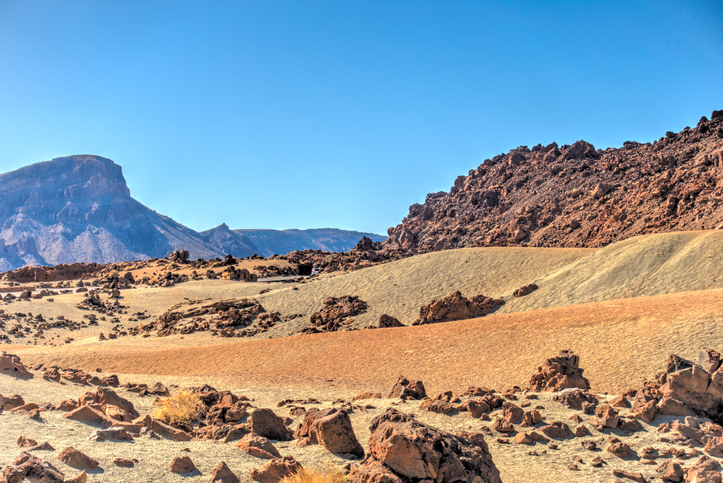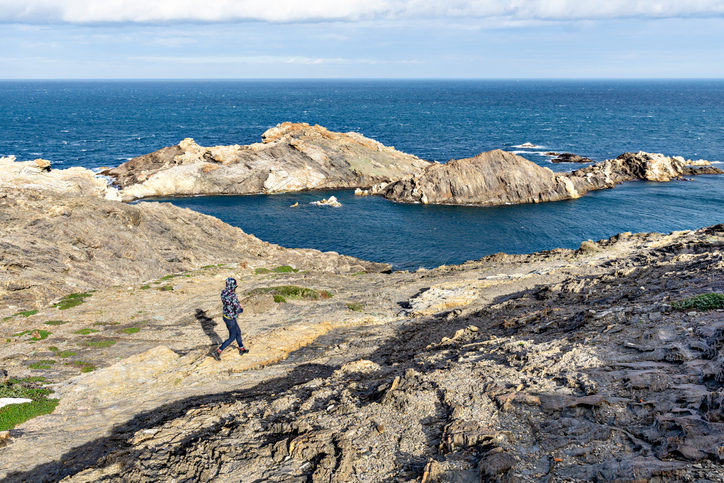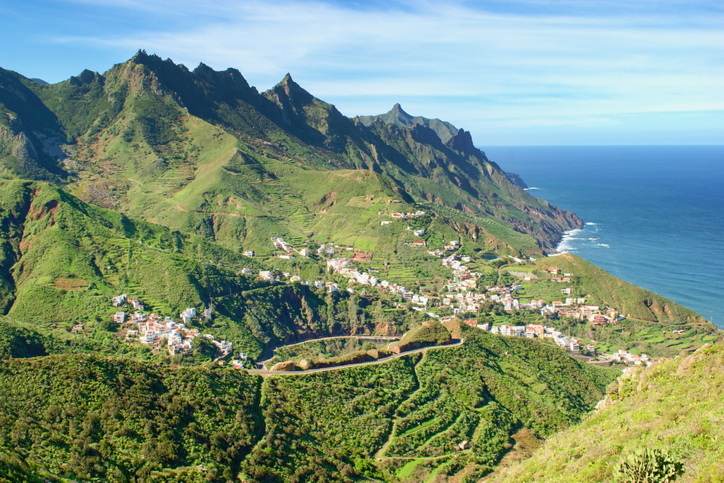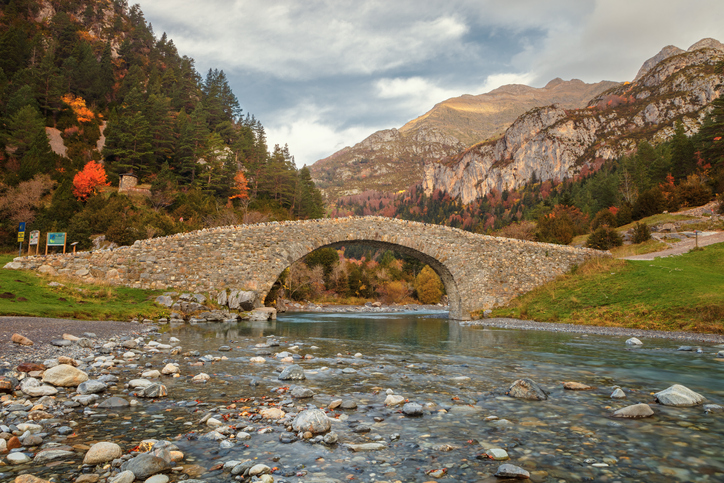It’s a scientific fact that spending time in the countryside is good for your health. The frenzied rhythm of urban life takes its toll on all of us, to such an extent that many millennials are deciding to migrate in the opposite direction to their grandparents during the so-called ‘rural exodus’ and seek a new life in the country. However, there are effective and less radical solutions. Recent studies indicate that spending 2 hours a week in the countryside can yield many benefits such as lower stress and blood pressure; reduced risk of suffering from allergies, diabetes and heart problems; improved mental health and even a higher life expectancy.
While your local park might be a useful solution, there’s no better place to reap the benefits of a natural landscape than from a protected natural park, where the beauty of nature remains unspoiled, to the greatest extent possible, from the influence of mankind. You’re spoiled for choice in this regard, as Spain is home to dozens of natural spots that are well worth a visit.
From Lookout Pro and with the help of Holidu, vacation rental search engine, below we present a ranking with the natural spaces best valued by visitors, using the Google database.
1. Ordesa y Monte Perdido National Park
If you’re a fan of fantasy films, you’ll fall madly in love with the landscapes of the Ordesa y Monte Perdido National Park. The bare slopes of the mountains, tinged in some parts with striking colours, will make you feel like you’re in the desolate land of Mordor in ‘the Lord of the Rings’. If that wasn’t enough, this gorgeous national park has earned the reputation of being ‘the Spanish Grand Canyon’ due to its rugged rocky landscapes.

This park has also been declared a UNESCO World Heritage site, with much to offer visitors in terms of landscapes: picturesque valleys flanked by rugged mountains, deep gorges, high-pressure waterfalls and magnificent viewpoints, where you can catch your breath and soak up the wonderful views. Official buses are allowed inside the National Park during summer months. However, most of the park can only be accessed by foot. What better way to fully immerse yourself in nature?
TIP: Do you want to know where all the birds come from? In the Valle de Escuain, bird lovers have a fantastic opportunity to observe the vultures and birds of prey that nest in the area.
2. Teide National Park
The Teide National Park, spanning a total surface area of 189.9 km2 which comprises the volcano and its surrounding areas, is another UNESCO World Heritage site. This is the most popular Spanish national park, with no fewer than 27,088 reviews left on Google. This park attracts four million visitors every year. It is a truely extraordinary natural space with a striking lunar landscape consisting of surreal rock formations, mystical caves and steep peaks that will take your breath away.
One of its biggest attractions is the formidable Mount Teide, which rises majestically over the island of Tenerife. Not only is it the tallest mountain in the Canary Islands, standing proudly at 3,718 metres above sea level, but it is also the tallest in Spain. What better way to put the icing on the cake of your trip to Tenerife?
TIP: Stay in the park after sunset to enjoy one of the starriest night’s sky found anywhere in Spain, completely free of light pollution. The clarity of the sky is utterly mesmerising. After all, the Teide National Park is certified as a Starlight Reserve and a Starlight Tourist Destination.
3. Garajonay National Park
Whether you’re looking to disconnect, or you just want to see something new, this beautiful Canarian enchanted forest, nicknamed “the kingdom of mist”, will live up to expectations. The hypnotic beauty of its sub-tropical plant life, beautiful flowers and wonderful UNESCO World Heritage landscapes attract more than 450,000 tourists every year. Despite its popularity, it is shrouded in a silence and calmness that make you lose all notion of time and space as you find yourself at one with nature.
The Garajonay National Park is home to unique plant species, ancient volcanoes that were once considered sacred by the island’s native population and a surprising ecosystem in which the vegetation absorbs water from the mist by means of compensating for the lack of rainwater.
TIP: Given the challenging nature of the walk, be sure to wear appropriate footwear and bring plenty of water. We also recommend bringing extra layers, as the temperature in the park is significantly cooler than in the rest of the island.
4. Caldera de Taburiente National Park
Caldera de Taburiente is another natural Canarian treasure which is only exceeded by Garajonay in terms of the number of reviews, obtaining an equally outstanding rating by users. The name of the park pays homage to the enormous volcanic crater of the same name that presides over this national park, surrounded by mountainous peaks. This impressively steep landscape, covered in a blanket of pine trees, is only interrupted by dramatic waterfalls.
The icing on the cake is the Roque de los Muchachos astronomical observatory, where you can view the starry night’s sky in all its splendour from almost 2,400 metres above sea level.
TIP: A good level of fitness is required to hike to the top of the volcano. Another option is to reach the top of the volcano by car. If this sounds more appealing to you, we recommend setting off early in the morning, as the roads are narrow and there can be significant traffic during busy periods.
5. Desfiladero de los Gaitanes
Knocking on the door of the Top 3 is this imposing natural spot in Andalusia; a striking canyon excavated by the Guadalhorce River. The only way to explore it is by undertaking the “Caminito del Rey”, a vertiginous route which was originally constructed for maintenance work being carried out at a nearby reservoir. In 2015, it was selected by Lonely Planet as one of its must-visit destinations.
The striking landscape of the Desfiladero de los Gaitanes has also made its debut on the big screen, being used as a scene in ‘The Bridge of San Luis Rey’ featuring Robert de Niro. This gorge is the habitat of various mountain goats, dormice, falcons and eagles.
TIP: This trail doesn’t have any fountains where you can refill your water bottle. As such, we recommend taking at least a couple of bottles. You don’t need to wear hiking shoes for this route. We suggest buying tickets in advance as they regularly sell out. You can purchase them online by clicking on this link.
6. Cap de Creus
This beautiful peninsula which spans 190 km2 is located just outside of Figueres—the childhood home of none other than Salvador Dalí—and offers extraordinary natural beauty. This rocky seaside paradise, with barely any trees, will leave you feeling as if you’re at the end of the world. The truth, however, is that it can be reached with a short car journey.

TIP: We recommend visiting Cap de Creus in summer when the weather is hotter, as you can make the most of your visit to take a dip in one of the nearby coves, such as Cala Culleró. Besides its outstanding natural beauty, the Cap de Creus also offers surprising geological features. One such example is animal-shaped rocks, shaped by the gradual battering of seawater and a stiff northerly breeze.
7. Timanfaya National Park
A trip around the Timanfaya National Park is the closest thing you’ll find to stepping foot on another planet without leaving Spain. This exotic and abrupt volcanic landscape of brown and reddish hues was formed as a result of the several eruptions that occurred between the 18th and 19th centuries. Since then, human activity has been restricted to practically zero.
The park is named after its only active volcano, the Timanfaya volcano, and forms part of a UNESCO Biosphere Reserve owing to its immense ecological value. During your trip, we recommend visiting the El Diablo restaurant. In this restaurant, diners can watch how the chefs harness the interior heat emitted by the Timanfaya volcano too cook dishes of typical Lanzarote cuisine.
TIP: During summer, if you’re travelling by car, it may take as long as 2 hours to queue to reach the top. If you take a taxi or a bus from the city, however, you aren’t forced to queue. As such, we feel it’s worth leaving the car at home.
8. Monfragüe National Park
Monfragüe is one of Spain’s youngest national parks. It is the only one in Extremadura, offering the perfect opportunity for a weekend in the countryside that doesn’t require a high level of base fitness. From the offset, its main attractions—including the Salto del Gitano viewpoint and the Monfragüe Castle—are concentrated in a small area of roughly 5 km2.
The park’s hiking routes are also relatively easy, with the added attraction of the chance to catch sight of birds such as black vultures, leopard vultures and imperial eagles. If that wasn’t enough, Monfragüe is also home to an excellent set of cave paintings and an astronomical observatory.
TIP: Between mid-September and mid-October, Monfragüe is home to one of the most spectacular natural events found anywhere in Spain: the deer rutting season, also referred to as “the bellowing”.
9. Cañón del Río Lobos Natural Park
The Cañón del Río Lobos is a magnificent nature reserve offering spectacular landscapes shaped over time by the waters of the gushing river that lends its name to the park. Its main attractions are its hiking routes (the majority of which are easy to walk), the Hermitage of San Bartolome (declared a monument of cultural interest) and a large colony of leopard vultures.
TIP: During key dates, such as Holy Week and the Fiestas del Pilar, the area around the hermitage can get very crowded. If you can, we recommend heading there early. Calculate how long it will take you to make the trip and then add some extra time to that figure. You’ll need this extra time as you’re bound to spend a while taking photos and admiring the beautiful landscapes and vultures!
10. Corona Forestal Natural Park
The Corona Forestal Natural Park is located in central Tenerife, surrounding the Teide National Park. It is the largest protected natural space in the Canary Islands, spanning no less than 46,613 hectares of unspoiled natural paradise.

If you’re a fan of hiking or mountain biking, this will be right up your street. As you delve into the lush green pine forests, you’ll see the blue shades of the ocean disappear from the horizon, with breathtaking ravines majestically unfolding right before your eyes.
TIP: With it being so close to the Teide National Park, it enjoys similarly magnificent views of the starry night’s sky. With this in mind, we recommend staying here after sunset to appreciate the views. During daytime, a good way to enjoy the marvellous views is by climbing to the top of the mountain. Be warned, this is only suitable for the brave! We recommend travelling slowly and carefully, being sure not to divert from the main motorways, as alternative routes can be ridiculously steep. If you don’t fancy driving, there are various bus services that will take you all the way to the top.







